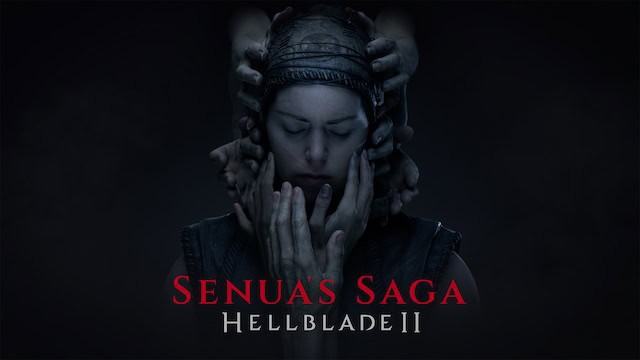Game Review: Senua’s Saga: Hellblade II (Xbox Series X)
Released back in 2017 for PS4 and PC, Xbox One in 2018, and the Nintendo Switch in 2019, Hellblade: Senua’s Sacrifice surprised a lot of people. An action-adventure game developed and published by Ninja Theory, it offered up a heavily narrative-driven fantasy experience that drew from Norse mythology and Celtic culture, and utilised realistic portrayals of mental health issues to tell its story. A story that surrounded the character of Senua, a warrior who sets out to save the soul of her dead lover from the goddess Hela.
It was a gorgeous game, with incredible acting, marred only by repetitive combat and puzzle elements (read our full review here). With the sequel, Ninja Theory have looked to remedy these issues, but in doing so, have created new ones that will leave some players unimpressed with the overall experience.
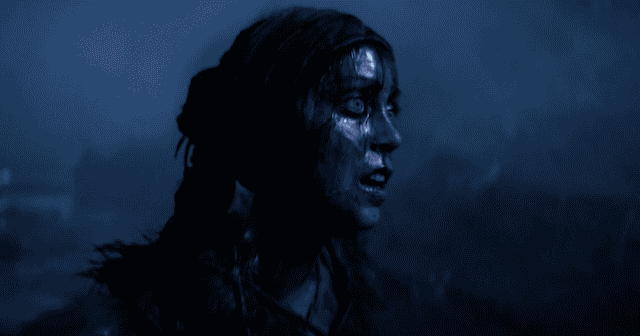
I can acknowledge that, even if it’s not my personal experience. I loved what Senua’s Saga: Hellblade 2 offered, but I am totally aware that it is one of the most polarising games released in some time.
The story is epic, and while it doesn’t have personal feel of the first game, it expands the world and the story of Senua to even greater heights. Following her to Iceland, where she aims to stop the Northmen from enslaving her people, but finds a land ravaged by giants and people cowed by their fears. Her own issues, represented by the returning voices in her head and the ever-following darkness, put her in the unique position of being able to help, even if that path is covered with blood and bones.
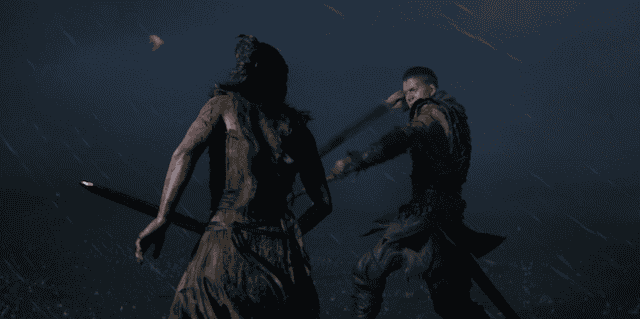
The story of Senua’s Saga: Hellblade 2 is one that you will want to experience yourself, spoiler-free, as it is gripping. A word like ‘epic’ can be overused, but when it comes to this game, it’s the only one that comes to mind. Something aided, once again, by phenomenal performances. Melina Juergens reprises her role as Senua, but alongside her, the likes of Chris O’Reilly as Thórgestr, Gudmundur Thorvaldsson as Fargrímr, Aldís Amah Hamilton as Ástríðr, and Steven Hartley as the Shadow are equally as excellent.
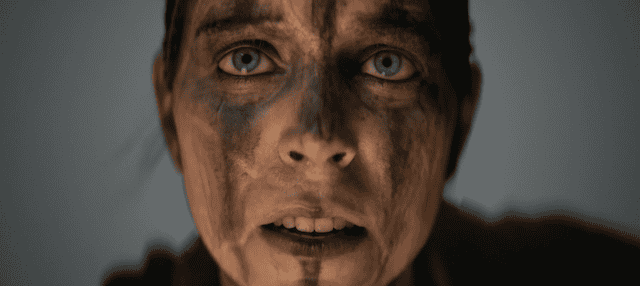
Of course, there is no reviewing Senua’s Saga: Hellblade 2 without talking about its visuals, and no matter how many people tell you this game is gorgeous, you need to see it, to believe it. From the stunning Icelandic landscapes, to ruined villages, to sacrificial arenas and fiery volcanic pits, to deep underground caves, and windswept beaches, this game is jaw-dropping.
When coupled with the amazing soundtrack, voice acting, and atmosphere, Senua’s Saga: Hellblade 2 is as cinematic as games get. There’s been nothing like this before, not on this scale.
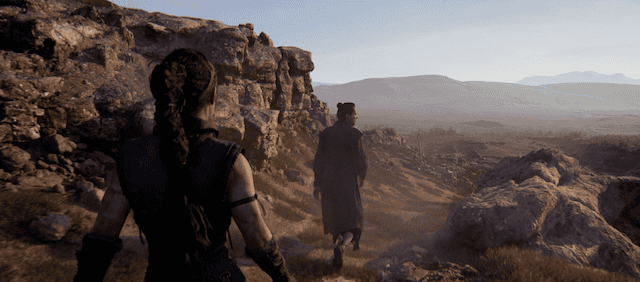
Which brings me to the gameplay, and the aspect of Senua’s Saga: Hellblade 2 that is so polarising. You see, by making the game based around a cinematic experience, Ninja Theory have turned it into something akin to a walking simulator. Where gameplay is very limited, action sequences have been enhanced, but cut down, and there are far fewer puzzles. Even though some areas offer you some freedom to ‘explore’, it is a very linear game and any paths that deviate from the main route, are often only there so you can find a lorestone or hidden face that adds narrative detail.
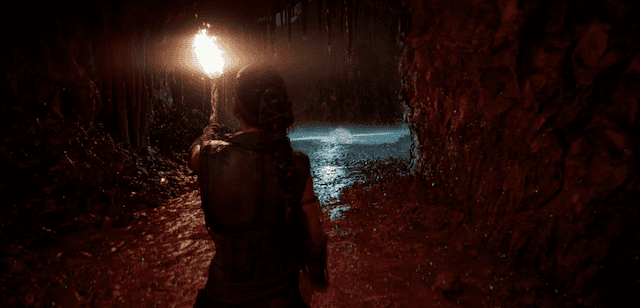
There are big sections of the game that effectively amount to just pushing forward on the controller. Something that will both frustrate and bore some players. Again, I get this, but I never found myself feeling this. I was too immersed in the experience and was grateful to have moments to drink in the peace and quiet.
Especially as Senua’s Saga: Hellblade 2 has many frantic moments too.
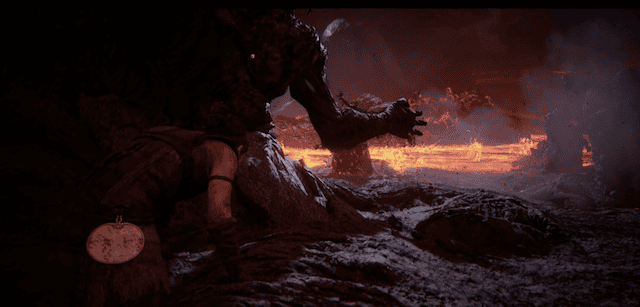
Combat it way more dynamic this time around, and almost feels like a movie playing out before your eyes. The fluidity, especially with Senua’s combination of light and heavy attacks, is thrilling, and the way in which enemies crash into you, make things so much more desperate. It’s not a complex system, especially with the returning ‘slow-motion’ aspect, but it is fun.
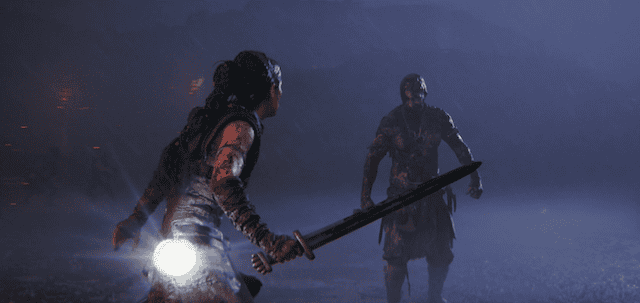
I was also happy to have the puzzle aspects of the game scaled back. The ‘find the symbol’ in the landscape puzzle is back, but there are a couple of new ideas here involving spheres and environmental changes. Nothing taxing and spaced apart to not become dull and repetitive. Admittedly though, in a game so rooted in being cinematic, these could feel a little out of place. Thankfully, all tie into the overall narrative in ways that make them feel more important.
This is just my experience though, and I am all too aware that some won’t see this game in quite the same way. Whereas its 6–8-hour playtime was more than enough for me, I can also accept that some will see it as far too short. It really is one of the most polarising games of the modern times.
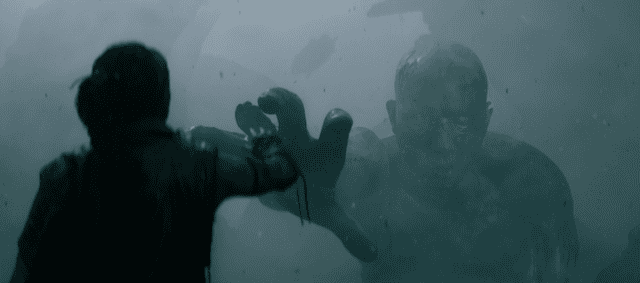
I loved it though. It’s as simple as that. I found myself deeply immersed in the story, fascinated by the world, enamoured with the visuals, and excited by the experience. As the end credits rolled, it felt like I had been holding my breath. I don’t often feel this way about games, so for me, that’s a sign that I had one hell of an experience.
Senua's Saga: Hellblade II (Xbox Series X)
-
The Final Score - 9/10
9/10

